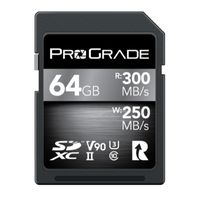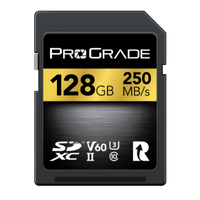8-bit color and 10-bit color – you’re certainly familiar with these terms. After all, they’re in the middle of one of the biggest debates among filmmakers. But when exactly should you use 10-bit over the 8-bit? If at all?
In this article, we’re going to answer these questions. The goal is not to settle that debate for you. Nor do we want to convince you to always film in 10-bit. The purpose of this blog post is simply to point out all the pros that shooting in deeper color space provides. That way, you know exactly what the advantages are and in which situation you will benefit the most.
After reading this, you’ll be able to make a calculated decision, based on your specific needs, when to shoot in 10-bit and when 8-bit color depth will do just fine.
What is Color Depth?
Color depth or bit depth indicates the quantity of all the color information a camera is set to record. It refers to the number of bits used to define each color channel – red, green, blue – for every pixel. Greater bit depth means more colors.
8-Bit Color vs. 10-Bit Color
The difference between 8 and 10 seems minuscule. Until you factor in, it’s actually 2 raised to 8th power and 2 raised to 10th power. Suddenly, 8-bit and 10-bit become a billion miles apart. Literally.
When we crunch the numbers, we’ll see that an 8-bit video can utilize only 2^8 = 256 shades of red, green, and blue to describe every pixel, while a 10-bit video can utilize 2^10 = 1,024 shades. That comes down to 16.7 million total colors for 8-bit video (256 reds x 256 greens x 256 blues) and 1.07 billion total colors for 10-bit video (1,024 x 1,024 x 1,024).
Do we really need that many shades? Most displays, including TVs, smartphones, and computer monitors, display videos in 8-bit anyway. Hollywood blockbusters on DVDs and Blu-rays are also in 8-bit. Not to mention our favorite TV shows. So, why would you ever need to shoot in 10-bit?
For starters, the fact that we see many Hollywood movies in 8-bit doesn’t mean they were shot in 8-bit. The same goes for almost every other professional tv show, film, or video. There are several benefits of shooting in 10-bit color, even when you eventually have to render it in 8-bit color.
The Advantages of 10-Bit Color
The difference between 8-bit and 10-bit color becomes apparent during post-production. Shooting in 10-bit doesn’t mean you need an equally capable monitor to appreciate the gains. True, the most authentic representation of 10-bit footage can only be seen on a 10-bit screen. Nevertheless, recording in higher bit depths still gives you added benefits, especially for color grading. You will most definitely notice the difference even when played back on an 8-bit display.
Anyone who has tried to grade an 8-bit video knows that you can only push it so far. With merely 256 shades per color, you’ll quickly introduce “banding” and wreck what should otherwise be a smooth gradient. You don’t have a lot of room for error in 8-bit, meaning it is crucial to get your exposure correct in the camera.
That said, grading is not something we do primarily to fix the poor footage. It’s a creative process instead. Like editing, we don’t do it because we screwed up when shooting. We do it because it’s the necessary part of creating art. Sure, greater color depth can and will forgive us many of our mistakes, but its main benefit still lies in the enormous creative freedom it provides to us.
10-bit color saves much more data from the camera sensor, allowing for a considerably greater dynamic range. This results in better skin tones and lifelike colors with much smoother gradations.
When 10-Bit is a Must?
The decision, whether to shoot in 8-bits or 10-bits, often boils down to your production needs. If you are not planning to do extensive grading, recording in 8-bits may work just fine. However, in some scenarios, 10-bit color is a must. For example, when shooting in log modes or creating HDR content with a wide color gamut.
Log modes naturally require more tuning, and even when some log modes designed for 8-bit video can hold up against banding better than others, it is still hardly ever a good idea to shoot in 8-bits when using log modes.
Similarly, because of the increased dynamic range of the HDR content, it needs greater color depth than SDR to avoid banding. So, while SDR can get away with 8-bits, HDR needs at least 10-bits.
In Conclusion
Both 8-bit color and 10-bit color have their advantages. The decision to film in one or the other should be based upon many factors, among all else: your post-production workflow, capabilities of your color grading software, and budget constraints. However, now that you know all the benefits of 10-bit color and know when it is an absolute must to use it, this decision-making process should be a lot easier.
Best Memory Cards For Recording 10-Bit Video
10-bit files take up much more digital real estate than 8-bit files. They simply contain that much more data. You may want to consider larger capacity memory cards for 10-bit projects.
More data also means a faster data rate, the amount of information your camera writes on a card every second. Consumer-grade memory cards are often not capable of sustaining the necessary write speeds for that task. ProGrade Digital memory cards, created for professional cinematographers, are all thoroughly tested and certified in speed classes required to record 10-bit video and beyond.





